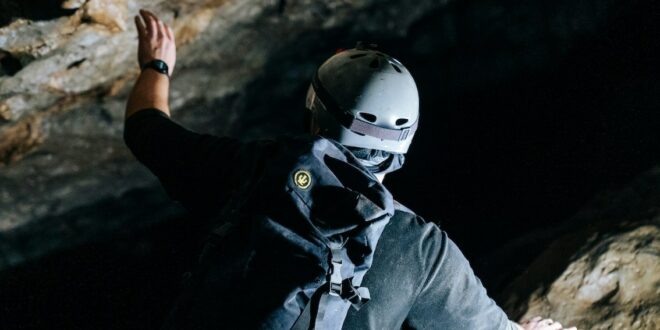Extracted from The Clear Leader: How to lead in a hyper connected world by James N. Donald & Craig S. Hassed published by Exisle Publishing, RRP $37.99.
As many people will recall, July 2018 saw the remarkable rescue of twelve boys and their soccer coach from a vast cave network in remote Thailand. The boys had been at soccer practice and decided to explore the cave. They had been in the cave many times before. However, this time, they got themselves into some trouble. Unbeknown to them it started to rain outside, and the cave began to fill with water. It was the peak of the wet season. The boys’ pushbikes were found abandoned outside the cave. Locals sounded the alarm. The news of the lost boys and their coach quickly captured international media attention, as the Thai authorities grappled with trying to locate the group inside a massive cave network in a remote mountainous area that was rapidly filling with water.
As the news spread, governments from around the globe began offering assistance. Technical experts, engineers, logistics experts and geologists were enlisted to help devise a strategy for finding the group and, if alive, somehow getting them out. The Thai government set up a command centre outside the cave and began coordinating the various elements of the Thai military, police and emergency rescue services, and volunteers, as well as the international experts who were flown in.
Leading the effort was the governor of the Chang Rai province, a man by the name of Narongsak Osatanakorn. With so much media attention, so many offers of help, and a huge swathe of around 10,000 volunteers, Osatanakorn’s leadership of the rescue was critical. He knew that they were racing against the clock. But, to have the best chance of success, everyone needed to be aligned and totally committed to the job. Early on in the operation, Osatanakorn was reported to have said to the group of rescue workers and volunteers:
Anyone who cannot make enough sacrifices can go home and
stay with their families. You can sign out and leave straight
away. I will not report any of you. But for those who want to
work, you must be ready any second. Just think of them as our
own children.
What did this statement do? It focused the rescuer’s attention on a) whether they wanted to be there, and b) why they were there. Through his communication, Osatanakorn clarified the purpose of what they were there to do, stripped it down to its essence. The statement also delivered a powerful ‘emotional ground’ from which all decisions and actions could be taken, for anyone working on the rescue. ‘Just think of them as your own children.’
There was unity of purpose and unity of command. The team, led by the Thai authorities and aided by international experts, set about working out how they could find the boys. In the end, they decided to send cave divers in to look for them. On the ninth day, to the world’s disbelief, the boys and their coach were found alive. They had survived mainly because of two things. First, by drinking from tiny trickles of fresh water running down the side of the cavern they were stranded in. Second, the coach was an experienced meditator and taught the boys to stay present, be inwardly calm and conserve energy throughout the ordeal. As a result, the boys were in remarkably good shape physically and mentally when they were found.
From there, a high-risk plan was devised to sedate each of the boys (who couldn’t swim), and after fitting them in wetsuits and oxygen masks, guide them through the dark, coffee-coloured waters of the cave system. Tragically, the day before the rescue operation was to commence, a Thai Navy SEAL died, while he was depositing oxygen masks along the treacherous route. This highlighted to all just how dangerous and uncertain the rescue operation was going to be.
But Osatanakorn decided to push ahead with the rescue plan. The boys’ health would start to deteriorate if they delayed for the weeks and weeks it would take for the waters to recede – and even this was not guaranteed. Led by Australian cave divers and medics, Dr Craig Challen and Dr Richard Harris, the team started the recovery operation. Somehow, the system worked. One by one, the boys and the coach were sedated and brought out. After an eight-day operation to extract them, all twelve boys and their coach were out safely.
What was it about Osatanakorn’s leadership that delivered success? There were obviously many factors at play, including a very large element of good fortune. But within the operation itself, smooth execution was by no means guaranteed. Between the different Thai organizations involved (e.g. the Navy SEALs, police, local medical teams and regional government officials), as well as the 10,000 volunteers and international experts, the whole effort could have become mired in conflict, poor decisionmaking, and the death of the boys. Yet, the Thai rescue head was able to focus the attention of these disparate actors on their core mission — their purpose — and calmly keep people engaged with that.
A compelling need
In times of crisis, this kind of laser focus is arguably relatively easy to generate. Osatanakorn even referred to the rescue operation as a ‘war’. There was a clear and present danger, and the contrast between success or failure was in sharp relief. Put another way, there was a clear and compelling need around which everything else could be organized. But how does a leader of any operation, team or project keep this kind of laser focus, when the compelling need is much less clear, or even seems non-existent? How do leaders sustain the performance and commitment of their teams over the long haul, or where the impacts of the work are much less tangible?









Join the Discussion
Type out your comment here:
You must be logged in to post a comment.